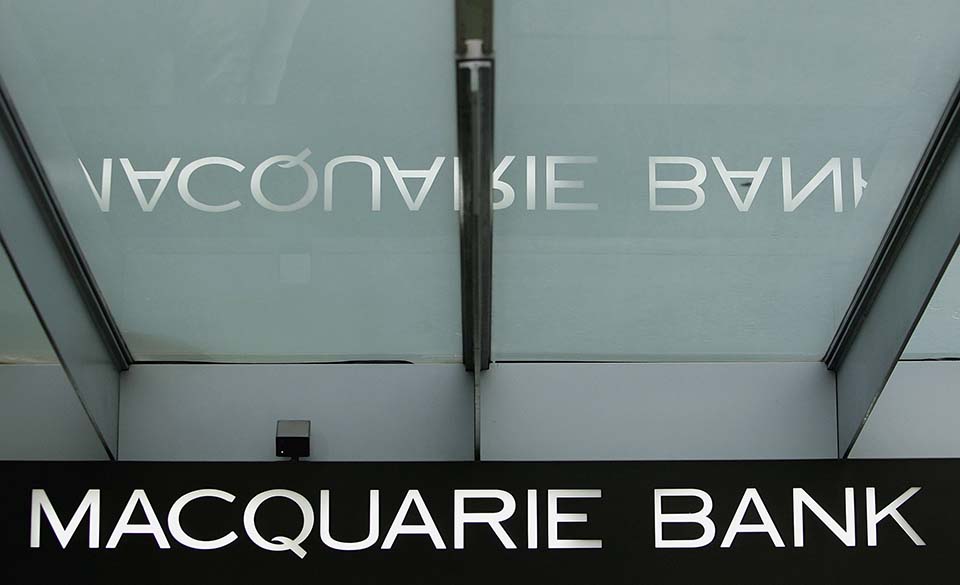When you write a book about Macquarie, the first thing you realize is that it is everywhere. The second thing you realize is how it got there: not from some grand over-arching design decided in a Sydney boardroom, but through the opportunism of people on the ground.
It is a point neatly illustrated where I stand in Louisiana, looking across the Mississippi river to a cluster of cylindrical white and grey storage tanks on the other side, linked by a riot of pipes to waiting ships berthed on a wharf.
This is the St Rose Terminal, one of 19 owned across North America by a group called International-Matex Tank Terminals, or IMTT. This powerful niche business, which handles the storage of bulk liquid products from the St Lawrence River system to the Gulf of Mexico, caught the attention of Macquarie’s head of the Americas of the time, Murray Bleach, in 2006.
Bleach had a problem. He had a mandate to build an infrastructure business across the US, but had found that there wasn’t that much infrastructure there for sale.
“We couldn’t buy airports,” he says. “There were negligible toll roads. So we were thinking: what else is infrastructure? And one day it dawned on us, what about those bloody big tank farms? So we went about tracking down who owned them.”
That is how it works? You spot an alluring bit of infrastructure, and then you go and knock on the door and ask if you can buy it?
“Absolutely. Absolutely.”
Thus did Macquarie’s engagement with US infrastructure proceed: not purely through the careful sifting of a thousand opportunities, but by spotting things on riverside horizons and asking nicely if they were for sale.
“Necessity is the mother of invention,” says Bleach, who is a raconteur with a larrikin streak. He is underselling Macquarie’s due diligence for a good story. Of course there was more to it than that. But Bleach is not joking about how the deal started: with shoe leather and gumption and a big smile.
A journey
When Joyce Moullakis and I set about writing a book about Macquarie, The Millionaires’ Factory – an institutional biography of sorts, from its 1969 beginnings to the present day, and an account of the culture that drove it along the way – it was clear from the outset that we would need to convey Macquarie’s remarkable and little-understood scale.
![Notes Cover1_Millionaire's Factory[1]-960.jpg](https://altmedia.euromoney.com/dims4/default/976d502/2147483647/strip/true/crop/960x1471+0+0/resize/840x1287!/quality/90/?url=https%3A%2F%2Faltmedia.euromoney.com%2F4d%2Fa7%2F132ec50c439d88acf3004d2758f8%2Fnotes-cover1-millionaires-factory1-960.jpg)
So each of us set out on road trips, Joyce across Australia and me across the US, highlighting the many occasions along the way when one would cross paths with Macquarie’s past or present.
We were making a journey and making a point. From my perspective just outside New Orleans, I was about as far from Macquarie’s Sydney headquarters as it was possible to be. I was not on some vibrant New York trading floor, but on the ground and in the weeds, but even here – especially here – Macquarie was, or had been, everywhere.
So it was that I found myself in the Louisiana town of Pineville – “a safe, family-friendly city where southern hospitality abounds and family values are honored,” as the website has it – where Macquarie owns a utility holding company called Cleco Corporation, owner of Cleco Power.
In Plano, Texas, it owns Atlantic Aviation, a network of fixed base operations providing fuel and hangars to private aircraft in 69 locations across the USA, and Aligned Data Centers, which invented a technology to remove heat at source from data-centre facilities. In Oklahoma, it was Lagoon Water Solutions, a network of wells and pipes across the Anadarko Basin; in Kansas City, the fund manager Waddell & Reed, which Macquarie bought in April 2021.
And so the assets continued, all the way up the nation, through the soybean fields and the ads for Donald Trump and the radio channels filled with ZZ Top and the Bible: a digital infrastructure cable network in Missouri, highways across Illinois and Indiana, real estate businesses in Chicago and Michigan, a telco in Ohio, a tunnel linking Detroit to Canada.
They include assets where Macquarie has made a fortune (Macquarie bought Atlantic Aviation for $238 million, then sold it to KKR for $4.475 billion 17 years later), and assets where Macquarie has got it horribly wrong.
One of the latter is the Indiana Toll Road, a microcosm of the worst of Macquarie’s excesses in the run-up to the global financial crisis (GFC) of 2008: bought for too much, over-leveraged with debt, over-engineered with a structure called the accretive swap, moved between satellite funds in an opaque arrangement that disadvantaged investors, and leading to the bankruptcy of the venture that bought it. This is the darker side of the success story.
All of them either are Macquarie assets, or have been bought, put into funds, revamped and sold again.
One could repeat the exercise almost anywhere: Mexico, Taiwan, Tanzania, Slovakia. In the UK alone, it has owned motorways and airports, water utilities and waste-to-energy power stations (“the chook-poop plant”, as they recall it in head office), offshore wind farms, rural broadband networks and early-stage hydrogen projects. It is the world’s largest infrastructure manager.
Early patterns
The interesting part is about how Macquarie got here.
The firm dates from the Australian offshoot of the British merchant bank Hill Samuel & Co, launched in 1969 into a restricted and somewhat dismal Australian banking market. Under its earliest leaders – initial chairman Stan Owens, managing directors David Clarke and Mark Johnson, chief executive Tony Berg – it set some early patterns that continue to guide the bank today.
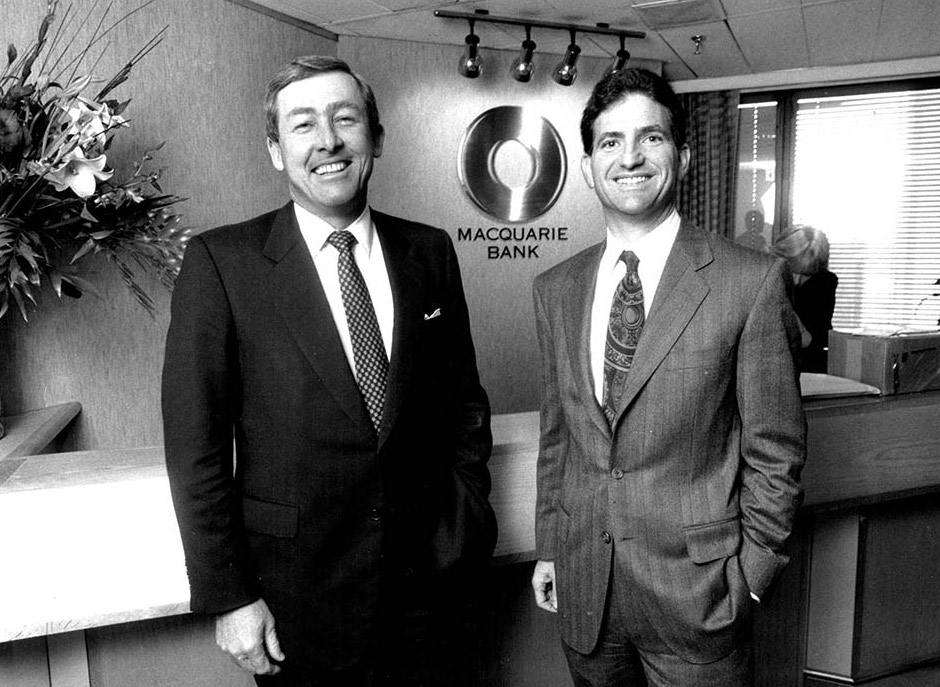
It would find niches and exploit them to the last inch: early examples were gold bullion and a toweringly successfully cash management trust.
Allan Moss, who would spend 31 years at the bank including a transformational 15 as CEO, still recalls people sleeping under their desks in a perspiration-stinking room amid mountains of paper in a pre-automated time because of the trust’s unexpected early success.
The bankers would seek adjacency – become good at something, take a look at what potential business line might be sitting next to it, then become good at that too. They would run into businesses (again, gold bullion would be a proving ground) when everyone else was heading for the exit, providing an affordable way to gain market share. They would put new employees through a psychometric testing process that they must still endure, in a refined form, today.
Sometimes Macquarie’s businesses flourish and then die, without any internal angst, because that is what they’re supposed to do at any given time in their journey
The bank would, especially under early leader Berg and his successor Moss, apply an exacting standard to risk management somewhat at odds with the free-wheeling corporate braggadocio of the Australian corporate world of the time. It wasn’t for lack of temptation. “In the mid-to-late 1980s, you did have [Alan] Bond, [Christopher] Skase, [Robert] Holmes à Court all doing deals, making takeovers, raising huge amounts of loan money and so on,” says Berg. “They had – how do I put it? – dubious ethics, and the question was, would we bank those people?
“My feeling was no. These were people that, you know, this was dangerous.”
It was not always a popular attitude.
“To get a loan approved through Tony, you really had to run the gauntlet,” says Richard Sheppard, who joined in 1975 and would go on to become CEO of Macquarie Bank Limited, the mainstream banking arm of the group.
Graeme Samuel, an employee in the 1980s who later founded his own business, Grant Samuel & Associates, recalls being taken apart by Berg after suggesting they co-underwrite something because rival Potter Partners were doing so.
“And I’ll never forget this, because he really ripped into me,” Samuel says. “He said: ‘Don’t ever let me hear you say something like that again. Whatever they do is their business. We’ll assess our own risks.’”
It was an attitude that arguably saved the whole enterprise during the 1987 crash. These same principles would probably do the same in the GFC 20 years later.
Another attribute was to give authority to the floor, allowing people room to try things out. “Basically, we had this mantra if there was an idea, you could employ one or a few people on that idea, and it didn’t require much investment to pursue,” says Berg. “The way I put it, it was an option. If it worked, you had endless upside. If it didn’t, you would write it off to experience. The risks and rewards were asymmetrical.”
Johnson adds: “There wasn’t really very much of a capital allocation process, because it was going on by stealth, out of the operating budgets down at the lower level.”
For a time, the team would thrive on being nimble underdogs. The Commonwealth Bank slogan in the 70s was ‘Get with the strength’, a tag-line illustrated with elephants as a demonstration of heft. The Hill Samuel Australia crew liked to think of themselves as smaller and faster natives able to get out of the elephant’s way.
Licence to thrill
But the real opportunity for this cluster of young and hungry bankers came when Paul Keating became Treasurer in the Bob Hawke government in 1983 and set about revolutionizing what he saw as a flaccid and comfortable banking sector.
He announced that he would award a series of licences to foreign banks, which was both exciting and concerning: the Hill Samuel team very much wanted to play, but were so small compared with established foreign players they knew they didn’t have a chance of getting a licence.
So, with a who-says-we-can’t commitment to innovation that remains a hallmark today, it set about applying for a domestic banking licence, despite blatantly not being a domestic bank.
Getting that idea over the line required persuading Hill Samuel & Co in London to sell down to 30%, and persuading the government and Reserve Bank that the new institution ought to be considered domestic – neither thing was straightforward.
Perhaps the most important deal in Macquarie’s history came when Australian states privatized infrastructure in the early 1990s – in particular, the tender for the Hills Motorway in Sydney
But this would be a landmark: when the team got their licence in 1985, they could be as good at lending as they were in corporate advice. They could strike out in their own name and bring staff, who might otherwise have left, along with them. More than that, there was a sense of great possibility: a group of talented young people aligned with a country finding its voice on the world stage.
But they needed a name. At first the idea was to style themselves after one of the great Australian frontier-spirited explorers, but it turned out most of them were either roguish criminals or had died ignominiously in the desert.
Eventually they found inspiration in Lachlan Macquarie, one of Australia’s first governors, who had instigated the Bank of New South Wales, developed the colony and died without scandal. More than that, he had introduced the country’s first domestic coinage in a story that spoke to creativity and innovation, exactly the attributes the team wanted to represent.
Initially, a shortage of coin in the new colony of New South Wales had led to a barter economy, one in which the most valuable unit of monetary exchange was rum. Nothing good tends to come from booze as a medium of exchange, so Lachlan imported Spanish dollars and punched a hole out of the centre of each coin. Thus, he created two units of currency: the Holey Dollar, as the outer coin became known, which was given a value of five shillings, and the dump, as the centre piece was known, worth 15 pence.
Not only had he created two identifiable coins out of one and restricted their use to the colony by being unique, he had also turned a profit, as the combined value was more than that of the original coin.
It was a solution to a challenging problem that delivered a profit from innovation. Clarke, Berg and the rest felt an affinity with Lachlan. Macquarie they would be.
The drivers of results
Throughout its life Macquarie has been a federation of different businesses that tend to deliver at different times. Perhaps the most under-celebrated, for example, is what today is called Commodities and Global Markets, an enterprise covering everything from oil and gas trading to foreign exchange; in recent years this has been the biggest single driver of results, fortified by a powerful North American presence filled with people who can wring vast benefits from volatility in energy markets.
Sometimes these businesses flourish and then die, without any internal angst, because that is what they’re supposed to do at any given time in their journey. An example here is a chunk of the corporate and asset finance division called CAF Lending, led in the post-GFC era by Ben Brazil, a man so off-the-scale smart that he managed to pick up the nickname ‘Ben the brains’ even in an institution as high-IQ as Macquarie.
Brazil’s tenure in this business was controversial because of a suggestion that Macquarie used government-guaranteed funds in the aftermath of the GFC to seed it (this is examined in detail in the book).
But today what really stands out is that by early 2016 it had invested A$33 billion ($22.5 billion) in 500 high-yield loan exposures around the world with a book that at any given time could hit as much as A$12 billion; but that when the idea seemed to run its course, it was largely wound up without emotion.
That is another Macquarie characteristic. As Robin Bishop, who ran Macquarie Capital for Australia and New Zealand, notes, about a different business: “You can scream at the storm, but if the market does not want to listen, ultimately, you have to change your strategy.”
The business Macquarie will always be most closely associated with in the popular imagination had its roots in something called the Financial Packaging Division, a structured finance advisory group that emerged out of corporate services under John Caldon. Many of the bank’s great and good would make their name here, most obviously future chief executive Nicholas Moore, who ran the division from 1991.
This business epitomized the sense of brainy opportunism that has characterized Macquarie throughout its life.
“Macquarie had no balance-sheet capacity to underwrite risk, no significant brand or even an essential reason to exist,” says John Roberts, who joined the division in 1991. “What was it that you were selling? You didn’t have money to lend.”
The team was selling advice and trying to position it as more valuable than services from lawyers or accountants.
“But that required you to start with a blank sheet of paper and work out how you could become relevant,” Roberts says. “You had to go out to the business world and create and persuade people to pay you money for an idea.”
Much of the bank’s expansion overseas in the Moss years began with this business, and the cross-border leasing business it had perfected.
But perhaps the most important deal in Macquarie’s whole history came when Australian states began privatizing infrastructure in the early 1990s, and, in particular, the tender for the Hills Motorway in Sydney.
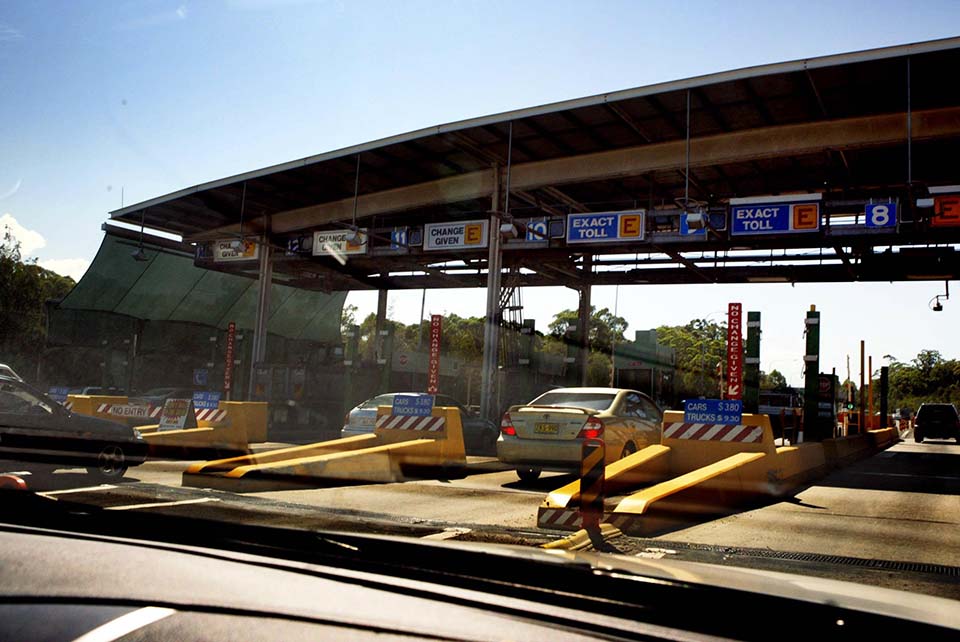
Today the Hills Motorway is known as the M2, an unremarkable sunburned stretch of snaking asphalt that serves as a key artery linking the west of Sydney to the city. It is an unlikely landmark: the first listed toll road company in Australia, and one that would change Macquarie for ever.
When Hills came up for tender, Macquarie scrabbled around trying to get hired by one of the three consortia that had formed.
“As you go around the forming consortium in this early stage, it is a bit like your first high-school dance,” says Peter Salisbury, a member of the financial packaging team and a key person on the bid. “The music starts and the girls are over there and the boys are over here, and you’re milling around working out who you want to dance with.”
Macquarie eventually got in by aligning with a tiny and recently bankrupted engineering contractor called Abigroup. Once in, Macquarie added something useful, by working out a way to ascribe value to the equity in a toll road project where previously nobody had done so.
“That changed the game in terms of road projects in Australia, because we were putting value on something that hadn’t previously been valued,” says Moore, who would go on to spend 10 years as CEO.
Furthermore, Macquarie worked out how to list it, which was quite the innovation given that the road itself wouldn’t be completed until three years after the listing.
Still, at the end of it all, the Macquarie team came to a realization: they hadn’t actually made all that much money; the group that had was little old cash-strapped Abigroup, as project developer.
It was a lightbulb moment: from that day on, Macquarie would approach infrastructure not only as an adviser but as a principal. It would develop and own projects from Australian toll roads to Danish airports to Korean bridges and everything else in between, and it would put them into listed funds that would allow retail to participate in this previously opaque and inaccessible asset class.
Once Macquarie had found this model, it became the heartbeat of the whole institution. A steady procession of entrepreneurial young people would make their names by going overseas and building businesses on this new infrastructure idea: in South Korea, in Canada, all over Europe.
Macquarie Capital, as this business and the broader investment banking operations would become known in 2001, was the public face of a fearless and hungry enterprise that believed it could do anything.
Every year of the 2000s until the 2009 financial year, the one that included the GFC, would be an all-time record, each one eclipsing the last, sometimes by as much as 60% or more year on year.
Different animals
There were, though, some challenges. One was that Macquarie was gaining a reputation for an almost perverse complexity, which would go on to become a problem when it turned out nobody could really understand the bank during the GFC.
The place became siloed even by the usual standards of investment banking, and no matter how much the top brass said about seamless cooperation for the good of the client, there was vibrant internal competition that would sometimes turn to open contempt.
“People who were hired in the 1980s and 1990s were quite different animals to what they are today, and now people play nicer,” says Simon Wright, head of fixed income and foreign exchange, and today one of the bank’s longest-serving employees. “Previously, you would hire people to be hungry animals.”
The commodities guys thought the investment bankers were “guys in flash suits talking loud in the lifts”, while someone in corporate services recalls that the only thing that united most of them was hatred of the property group.
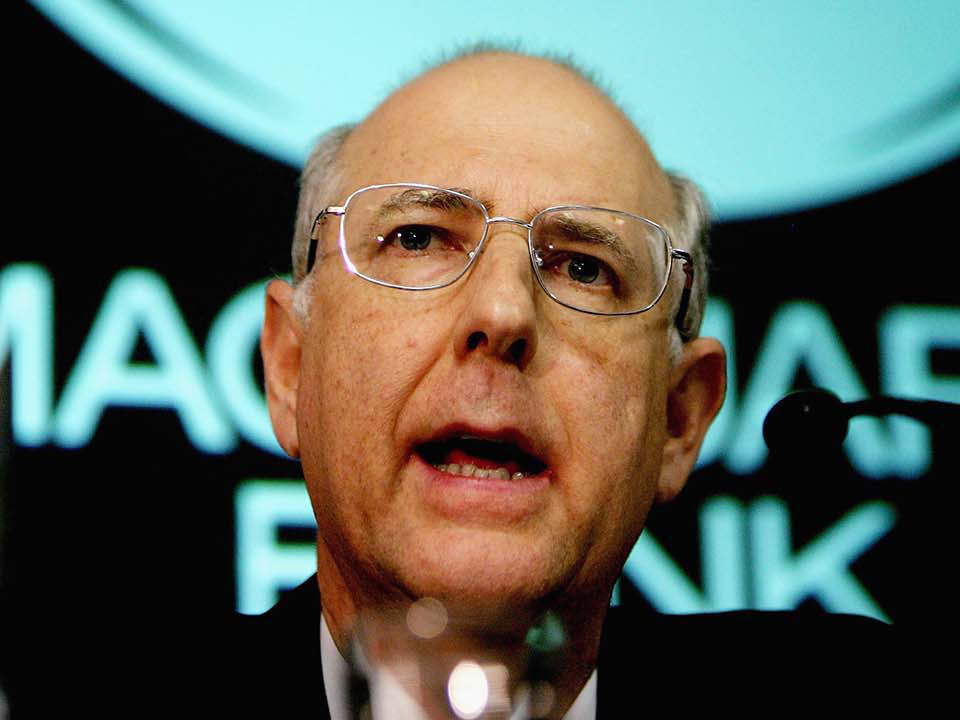
Beneath the calm and serene leadership of Moss, whose avuncular clumsiness masked one of the sharpest minds ever to take on a bank, the alpha personalities on the executive committee were in a state of open hostility towards one another.
“I had some of the most direct conversations one-on-one with other group heads, and as they say, you don’t turn up to a gunfight with a feather,” recalls Peter Maher, who ran the financial services group and later banking and financial services.
Externally, Macquarie seemed unstoppable; though its famed bids for Qantas and the London Stock Exchange did not ultimately succeed, they were emblematic of an attitude that absolutely nothing was beyond it.
And they were making a fortune, as a bank and as individuals (another key Macquarie attribute has always been to link pay very closely to performance, and to marry an individual to the bank with very long-term vesting arrangements, predicated not on revenue but profit). Better still, they were doing it without blowing up: the risk-management roots remained intact throughout a period of exceptional growth.
But somewhere along the way, perhaps they began making a bit too much.
Several institutional investors we spoke to around the world articulate a similar evolution in their view of Macquarie through the 2000s.
First, they thought of Macquarie as an innovative leader, bringing valuable insights and new opportunities with a vibrant and infectious can-do manner. Then, it seemed to be levying more fees, and greater layers of fees, than seemed strictly necessary. Then, it became a bit opaque, and the investors would develop concerns about lack of transparency. Eventually, the investors and Macquarie would go their separate ways, later finding a new and more equal field on which to engage, in which they are co-investors in the same infrastructure.
This shift was particularly acute in Canada: in our interviews, alumni of each of Ontario Teachers’ Pension Plan, CDPQ and Omers, three of the most powerful in the world, all recounted exactly the same experience. Macquarie would eventually respond, getting rid of related-party transactions and improving transparency.
Sometime around the early 2000s, domestic perception of Macquarie seemed to change from a battling underdog to a tall poppy, that uniquely Australian thing. The nadir from a public relations perspective came around the time of Macquarie’s successful bid for Sydney Airport in 2002, which among other things led to rivals Virgin Australia changing its aircraft livery to say: “Macquarie: what a bunch of bankers”.
Then there was another problem. Macquarie’s listed funds had opened up infrastructure to retail, which was fine when everything was going up. But retail investors did not tend to act with the necessary long-term approach when things were going down, not helped by a habit of Macquarie creating listing structures that involved retail investors paying for their shares in instalments, leaving them exposed if share prices fell between the due dates of those instalments.
“What was going on with things like Sydney Airport is we were using listed vehicles to invest in illiquid assets, and we thought that was a good way to have these things owned, to give investors greater liquidity at smaller investment sizes,” says Macquarie’s CEO, Shemara Wikramanayake. “With hindsight, it’s not such a good match” if investors haven’t had specialist advice on tolerating illiquidity. “Because the biggest thing the investor needs to understand is the longer duration and illiquid nature of the assets.”
From the late 2000s, accelerated by the financial crisis, Macquarie would steadily close dozens of these listed funds and shift the assets to unlisted vehicles. Today only two listed funds remain, in Korea and Mexico, while private funds had A$238 billion in assets under management on March 31, 2022.
Challenging days
A willingness to reinvent is another characteristic of the bank.
The GFC was a watershed, as it was for most institutions. To this day, in Australia and elsewhere in the world, a view persists that Macquarie was close to going under in 2008/09, as it came under persistent attack from short sellers and then, when short selling the stock was outlawed in Australia, credit default swap activity.
Moore and then-CFO Greg Ward, the two people in the best position to know, will deny this until they are blue in the face, noting that their asset position going into the crisis was such that even if every liability had had to be repaid, they would still have been in front.
“We used to say, if the markets closed, if we had not even one dollar of new money coming in the door, we could keep running the business and there would never be a period of insolvency where people would be asking for money that we didn’t have,” Moore says. Kevin McCann, acting chairman at the time, is rather less certain.
“They were very, very challenging days,” he says. “If you are a bank whose shares are in freefall, and your CDS are being manipulated and some counterparties will not deal with you, the outlook was grim.”
It is worth noting that Macquarie was profitable throughout.
But what is most interesting about Macquarie’s behaviour in the GFC is that even as the storm raged and rumours flew about the bank’s sustainability as a going concern, it was taking advantage of the crisis through acquisition. In the absolute teeth of it, Macquarie bought Constellation, a struggling US energy business that is today the North American mainstay of Macquarie’s hugely successful commodities business under Nick O’Kane; and in the immediate aftermath, it bought Delaware Investments, transforming its reach in public asset management.
At its 2022 full-year results, Macquarie had A$535.1 billion in public assets under management.
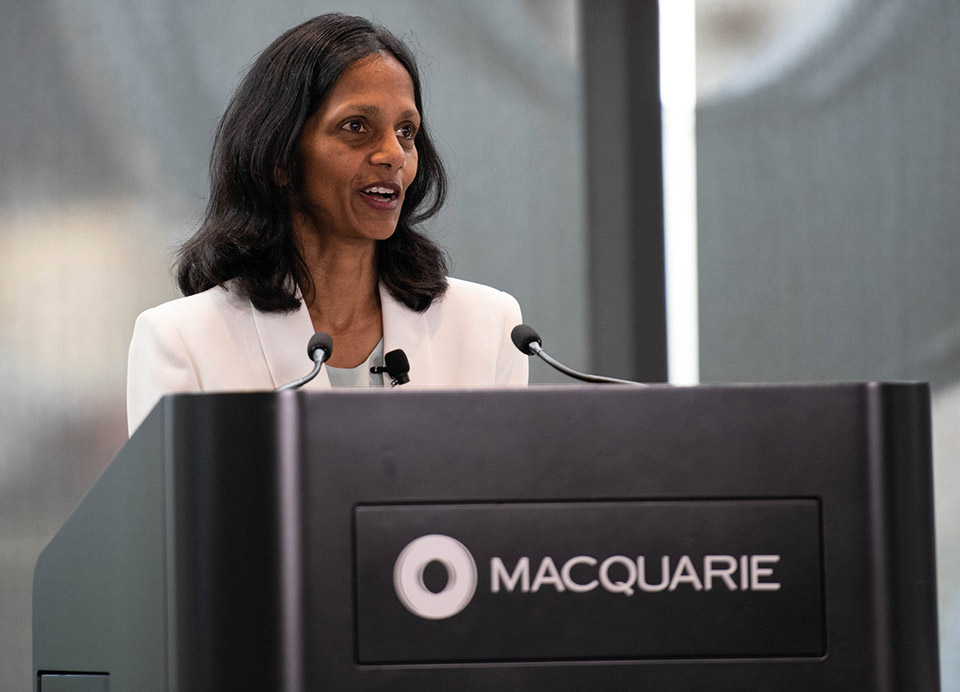
So what is the next stage of the evolution? Under Wikramanayake, the most obvious priority has been green – by which we don’t mean just saying the right things about sustainability, but also turning it into a bona fide profit engine at the same time. It is a process that made its clearest step forward with the acquisition of the UK’s Green Investment Bank during Moore’s time, and the steady absorption of that bank first into Macquarie’s investment banking arm, and more recently its asset management division.
It is here that the bank’s brightest minds are focused today: on hydrogen, on floating offshore wind projects, on various things the bank believes will one day reach a J curve and be on the right side of a pivotal trend.
Kate Vidgen, global head of industrial transition and clean fuels, today spearheads the hydrogen activity, and started well before this was in any way fashionable.
“To give Macquarie a lot of credit, they said: ‘OK, go and find some hydrogen assets’,” she says. “They didn’t even blink an eyelid, which was quite amazing, because I had a number of people externally at that time describe it as a science experiment.”
Today, Wikramanayake wants Australia to be a global centre for green hydrogen, and Macquarie has initiatives underway from the Netherlands to the Orkney Islands.
Macquarie also has a reckoning of its own to consider. It no longer finances or owns coal plants, but does still have a small coal-trading business and a growing oil one, bolstered by the operations it acquired from Cargill in Minneapolis and Calgary.
O’Kane, who runs commodities and global markets, says he can foresee a time when his business won’t be able to handle oil: “At some point in the future, I think the answer obviously has to be yes.”
But Wikramanayake herself, considered something of an icon for Australian (and private-sector) climate-transition finance, is blunt about the challenges.
“We’re shooting ourselves in the foot if we try to say we’re going to get off gas tomorrow, because we do not have baseload renewable energy to replace it,” she says. “So, if we want to get back to living like cave people, let’s do that. But if we want to be intelligent and considered, let’s think about how we develop firming solutions.”
Being part of those solutions is already the next obvious engine for Macquarie, which has still not failed to make a profit in 53 years, nor gone externally for a chief executive. But guessing what Macquarie will look like down the track is a fool’s game: the only things you can say with certainty are that it will look different from today, and it will still be making money.
The Millionaires’ Factory by Joyce Moullakis and Chris Wright is published by Allen & Unwin on February 28 and is available on Amazon here.
